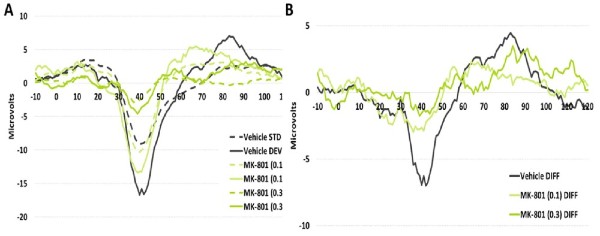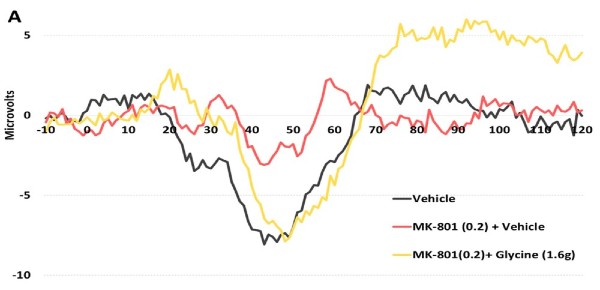Auditory Evoked Potentials
Mismatch negativity (MMN) is a measure of pre-attentional auditory novelty detection. MMN amplitude is reduced in patients with schizophrenia and other CNS disorders and is an important translational biomarker in drug discovery. MMN is elicited clinically and preclinically using an auditory oddball paradigm in which randomly presented deviant tones are presented with 10% probability within a series of standard auditory tones (90%). The brain will adapt to and suppress response to the standard tones, however the “oddballs” inherently elicit a larger Auditory Evoked Potential (AEP). Subtracting the averaged EEG waveform in response to the standard (STD) tones from the averaged responses to deviant tones (DEV) reveals MMN, a component of the difference (DIFF) potential waveform.
Figure 1: Mean AEPs from Frontal Cortex of unanesthetized SD rats during an auditory oddball paradigm. Note the larger waveform to the oddball or Deviant (DEV) tones than the (A) Standard (STD) tones in Vehicle – treated rats. This difference is seen in the (B) difference potential waveform (DIFF) from which MMN is derived.
The NMDA – receptor antagonist MK – 801 dose – dependently suppresses the AEP responses and MMN. MK-801 (0.1 & 0.3 mg/kg, i.p.) suppresses (A) STD and DEV and (B) DIFF wave forms 40-60min post-dose. The DIFF waveform components (C) are used as a metric of Mismatch Negativity. Data are presented as mean ± SEM [n=8-9].
MMN has been linked to N-methyl-D-aspartate (NMDA) receptor function. This is evidenced by the MK-801-induced impairment of MMN, but also by the recovery of this impairment with Glycine.
Figure 2: MK-801 (0.2mg/kg)-impaired Mismatch Negativity (MMN) can be restored by Glycine (1.6g/kg) as seen in the (A) difference waveforms and its (B) waveform components. [Data are presented as mean ± SEM (n=13-16). *p<0.05, t-test vs. vehicle]. MK-801 (0.2) and Glycine were given 60 and 30 minutes prior to MMN, respectively.






